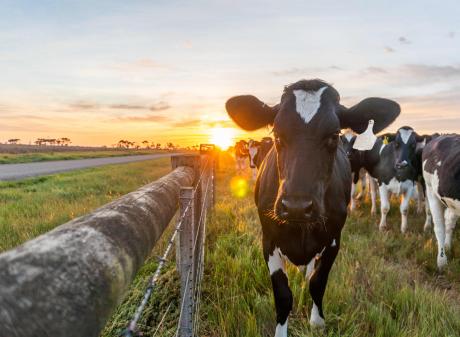
The province is one of the forward-moving regions for farm sales over winter and listings usually come on in a rush over spring.
However, real estate agents report fewer listings in spring catalogues than expected and wonder if rising payout forecasts are discouraging farmers from entering a backlog of properties on the market.
PGG Wrightson real estate manager Peter Newbold said the rural market was looking better than last year and mid-November would reveal how spring sales unfolded.
"There’s a lot of people that have wanted to move on for a whole lot of reasons whether it’s succession or retirement or whatever and they are probably thinking things are a little bit more settled and the future looks a bit better so let’s go and list our property and move on."
Some sectors had more listings than others with spring selling yet to kick into gear, he said.
"I would have thought there might have been more dairy [listings]. I would be surprised if our competitors didn’t agree and I think some of that comes back to people thinking: ‘Gee that payout looks good, let’s bank it’.
"Hindsight’s a wonderful thing and often they bank it and miss the cycle so they hang on there too long ... Often when you sell you can use those funds for something else because who knows what its going to be like for a couple of years."
Fonterra’s midpoint increase to $9 a kilogram of milksolids was matched this month by Synlait.
Mr Newbold said the fewer dairy listings than expected included the Canterbury market.
"From a sheep and beef perspective there are a number of listings and support blocks, but definitely dairy listings have been quieter.
"It’s also a busy time of the year for them with calving and the weather has had an impact and people are probably sitting back to see where things are going to sit."
However, overall conditions were better than six months ago with the last couple of Reserve Bank official cash rate changes lifting sentiment. When farmers could afford to finance loans and buy farms at the right price then more sales would come through, he said.
"The real estate market in all areas, especially rural, has been sitting on the bottom of a trough for a number of years. If you look at all the external factors like interest rates and inflation they’ve hit that rural market the hardest in 20 or 30 years so I think we are just starting to come out of that and there will be a climb up, but more controlled than in previous years."
He said beef and dairy prices were positive with possibly some improvement ahead for the problem area of sheep returns.
Some late listings were expected to come on to the market over the next four to six weeks and there could be distinct spring and autumn markets.
"Are there buyers out there? Yes there are, but there’s not thousands of them and they will be selective and they will not be paying on a capital gains story. They will be paying on something showing a return and that’s something vendors need to be aware of."
Nationally, the Real Estate Institute of New Zealand (REINZ) tracked 33 more farm sales for a nearly 19% increase for the three months ending August compared with the same period a year ago.
However, the 923 farms sold nationally in the year to August was down 166 farms compared with the previous year.
Rural spokesman Shane O'Brien said August sales were similar to sales for the month in 2023 and 2022, despite headwinds faced by much of the rural sector.
"August is traditionally a slow month for sales as many sellers wait for the warmer spring months and the traditionally busier selling months of October to December.”
Canterbury was up 11 sales in the three months to August with only Auckland ahead of this, while Otago was back 12 sales and the West Coast down seven sales.
Mr O’Brien said real estate agents across the country were reporting increased inquiries after dairy farm sales dropped by 24.7% and dairy support farms by 10.8% over this period.
Nationally, the median price for all farms sold across the three months was $28,625 per hectare, a rise of 15.8% from $24,720 last year.
The dairy median was $36,930/ha from eight properties sold, finishing farms $33,520/ha from 33 properties, grazing farms $16,080/ha for 69 properties.
Mr Newbold said big corporates or superannuation-fund investors had yet to fully re-enter the market, although large family and farming businesses were looking to buy support blocks.
Larger properties selling the past four months had gone through long due diligence periods as buyers were doing more homework on their investment.
He said Otago and Southland activity had slowed up as a result of storms which had put the markets back a month.
Overseas investment for carbon farming and forestry had slowed as a result of land restrictions, but they were looking for land to put solar farms on as they could prove they were adding value to New Zealand, he said.














